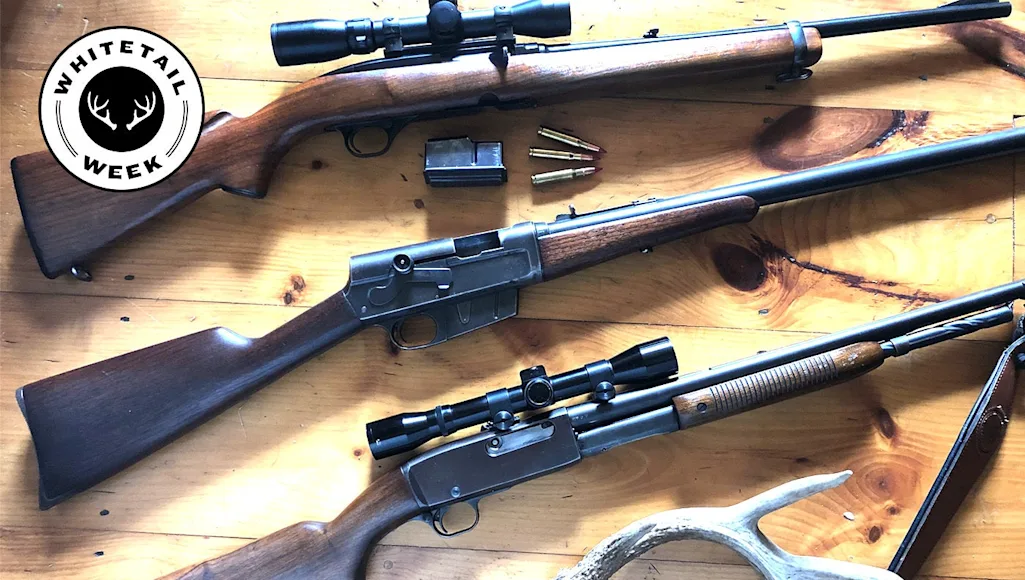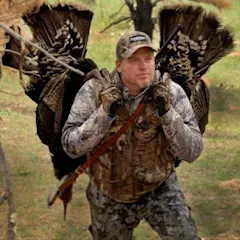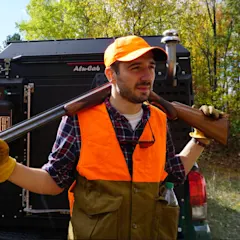_We may earn revenue from the products available on this page and participate in affiliate programs. Learn more ›
_
It’s Whitetail Week at Field & Steam. All week long, we’ll share daily hunting tactics, gear tips, and stories dedicated to America’s No. 1 game species—the whitetail deer. And if you want even more deer coverage, sign up for our all-new weekly newsletter Whitetail 365
.
Suppose we invited you to our deer camp and told you that our group includes a good number of old-timers who love their classic deer rifles. You’d know right away what those rifles would be, wouldn’t you? They’d be 94s and 336s and 99s, 77s, 70s, and 700s. They’d be the classics you can read about in this list of The 10 Best Deer Camp Rifles
.
The rifles below, on the other hand, are the classic deer rifles that you wouldn’t expect to see—but would love to. No one’s apt to show up to camp with a JC Higgins Model 50, or a Remington Model 8, or Mannlicher-Schoenauer 1903. But wouldn’t it be cool if they did?
Wouldn’t it be even better if you did?
Here are a dozen great, old whitetail rifles that will still get the job done and, in many cases, will have the whole crew at camp clamoring to get a closer look at the oddball classic you brought to the party.
Remington Model 8

The Model 8 was the first autoloading rifle made to handle big game. Rock Island Auction Company
Big-woods deer trackers who like an open-sighted rifle love the Winchester 94 and the Marlin 336 or 1895. Those are fine choices, but there’s an even cooler option, and it’s the Remington Model 8. Originally offered as the Remington Automatic Rifle in 1906 and renamed the Model 8 in 1911, this long-recoil John Browning design is the precursor to the well-known 740/7400/750 and was the first semiautomatic centerfire rifle chambered to deal with big game. What makes it such a good big-woods—and especially tracking—rifle, is that it’s slim, lightweight, points well, and shoots fast without the need to work a lever like a cowboy-action champ. And it came in .35 Rem, which is still a great big-woods thumper.
What makes the Model 8 so cool, for one, is that it’s the rifle that put an end to Bonnie and Clyde’s shenanigans (according to the lore, at least, it was legendary Texas Ranger Frank Hamer’s deputy, Prentiss Oakley, whose Model 8 delivered the fatal shot to Clyde Barrow’s temple in the 1934 ambush), and, for two, it’s just one crazy-looking gun. With its sheathed barrel, fixed box magazine, and receiver-mounted safety lever, it’s guaranteed to set you apart from the crowd. —Dave Hurteau
JC Higgins Model 50 (Mauser 98)

A JC Higgins Model 50. Rock Island Auction Company
These rifles were sold by Sears, Roebuck & Company, and the brand name—J.C. Higgins—was in fact the name of a Sears employee who was an Irish immigrant. (Mr. Higgins actually had no middle name but the company added the “C” because it sounded better.) The rifles were nothing more than sporterized Belgian 98 military Mausers. Of course, these Mauser actions are legendary, still trusted, and routinely customized. And in the J.C. Higgins format offered during the 1950s, they were substantially less expensive than the Winchester model 70 rifles of that time.
Model 50s are excellent rifles, and they’ve been carried to the deer woods by many hard-working blue-collar Americans. Many of these rifles have been cannibalized by gunsmiths just to get the action for a new custom build. Only available in .270 Winchester and .30/06, the Model 50 calls back to a time before the Internet when many Americans lived out of a Sears catalog—and when you could even order a deer rifle by mail. President Lydon Johnson changed that in 1968. By that time the Model 50 was no more. Today you’ll pay anywhere from $400 to $700 for a Model 50 and they’re worth every penny. —Richard Mann
Mannlicher Schoenauer Model 1903
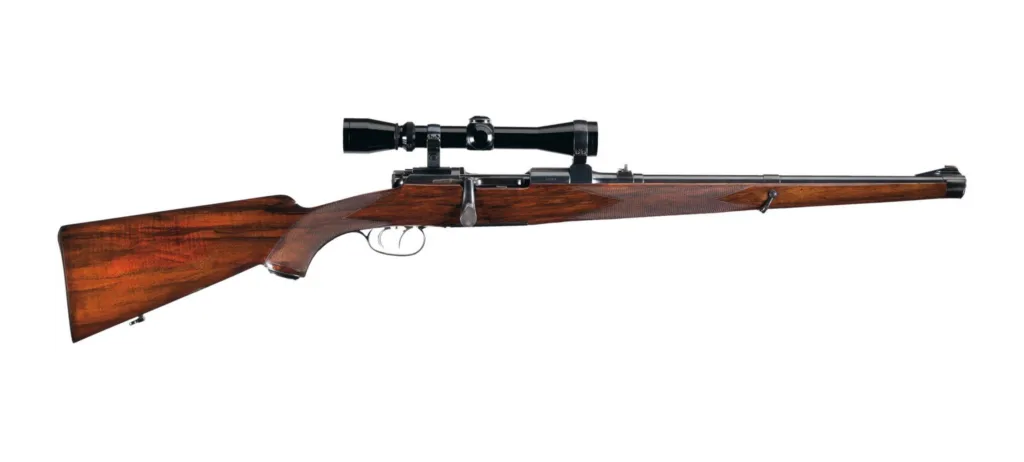
A fine example of Mannlicher Schoenauer Model 1903. Rock Island Auction Company
How nice is a Mannlicher Schoenauer 1903? Pretty damn nice. I first encountered one at my gunsmith’s shop. He had two of the rifles in for a cleaning—because that’s how 1903 owners get their guns cleaned—and I picked each one up. I had read about them before, but after handling both rifles all I could say was, “Oh…wow.”
The Mannlicher Schoenauer 1903 has been called the finest factory-made rifle ever produced. At around 5½ pounds, It feels like everything a bolt-action should be. The slender rifle with a split-rear-bridge receiver was made in Austria with the mechanical precision that part of the world is known for. It’s so smooth it practically opens and closes itself, feeding each round from its rotary magazine with ease. With sweeping lines, a double-set trigger, and “butter-knife” bolt handle, 1903s stand out.
They’re guns that look like they belong on an adventure, and their presence brings the idea of adventure to any deer camp gun rack. Ernest Hemingway bought a 1903 at Griffin & Howe and took it to Africa where his wife used it to take a lion. He also shot two antelope with it in Wyoming and even killed three sharks with the rifle while he was fishing in the Bahamas. Like many great rifles of the 20th century, the 1903 eventually became too expensive to manufacture. Today, used examples go for $1,200 to almost $3,000 depending on the condition. Though that sounds expensive, they’d cost much more if they were made new today. —Matthew Every
Remington Model 14/141
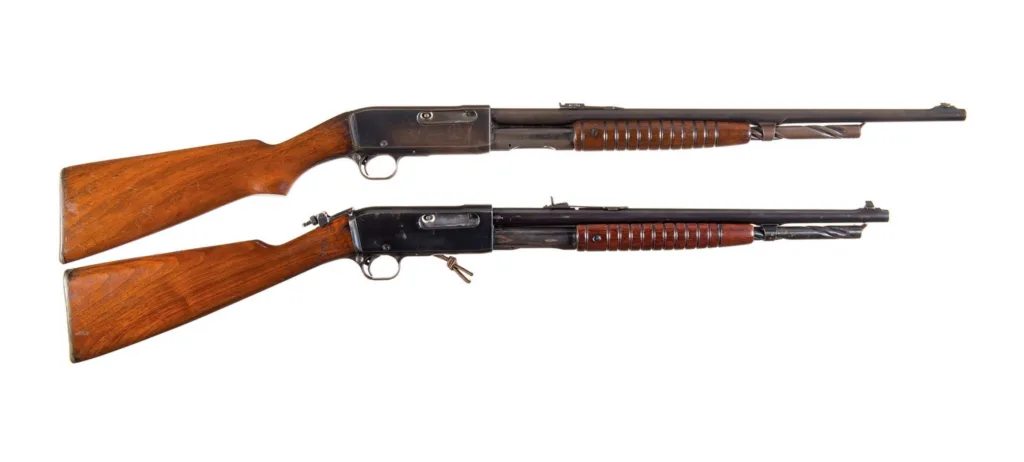
A pair of Remington Model 14s, the standard version above, the carbine below. Rock Island Auction Company
At just about every deer camp I’ve ever visited in Pennsylvania and New York, you’ll find at least one, if not three, Remington 760/7600s. They’re great. I own one myself. But I hardly ever use it because I also own its precursor, the Model 14. Introduced in 1913 to compete with the great lever-action rifles of the time, the Model 14 was the first high-power slide-action centerfire rifle and the only one that’s ever caught on with deer hunters.
Like the more modern Remington pumps, this one is reasonably quick, dead reliable, and more accurate than it has any right to be. (Mine, also in .35 Rem and despite its hideous trigger, prints darn-near 1-inch groups at 100 yards.) With its slimmer lines and unique spiral magazine tube, however, the 14 will distinguish you from the 7600-toting hordes, as will the near identical 141 Gamemaster. The carbine version can be pricey, but you can find standard 14s and 141s for $600 to $800. —D.H.
Ruger .44 Carbine
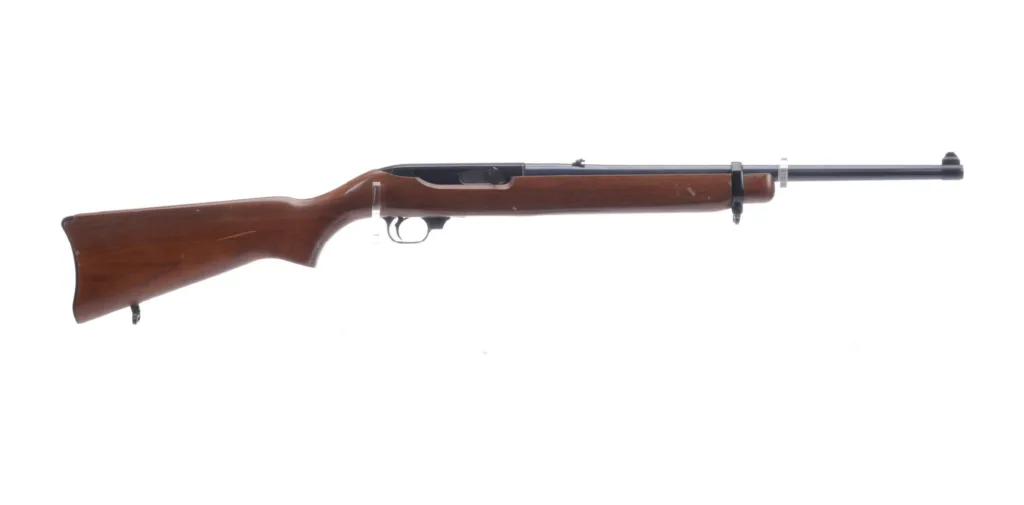
A Ruger Model .44 Carbine. Rock Island Auction Company
Have you ever asked yourself, “What if my 10/22 could kill a deer?” One look at the .44 Carbine, and you’d guess that was exactly how Bill Ruger came up with the handy little brush gun. But the rifle actually came out four years before the 10/22. Originally called the “Deerstalker,” the pistol-caliber semi-auto is a near perfect buck tracking rifle. It has the same overall length as the 10/22, same stock dimensions, and pretty much the same controls. Is it a particularly accurate rifle? No. Can it dump a tube full of .44 Magnum as fast as you can pull the trigger? Definitely.
Bill Ruger tested the .44 Carbine on an African safari in 1961. Afterward, an advertisement touted that the rifle had been “proven on the plains of Africa” and was “developed to provide the sportsman with the best possible rifle for hunting deer and other medium-sized game in brush country.” While the .44 Carbine doesn’t make anybody’s list of top African safari rifles today
, it’s still one hell of a good brush gun and a cult classic among eastern deer hunters. They often beat auction price estimates and can go for well over $1,500. —M.E.
Remington Model 600
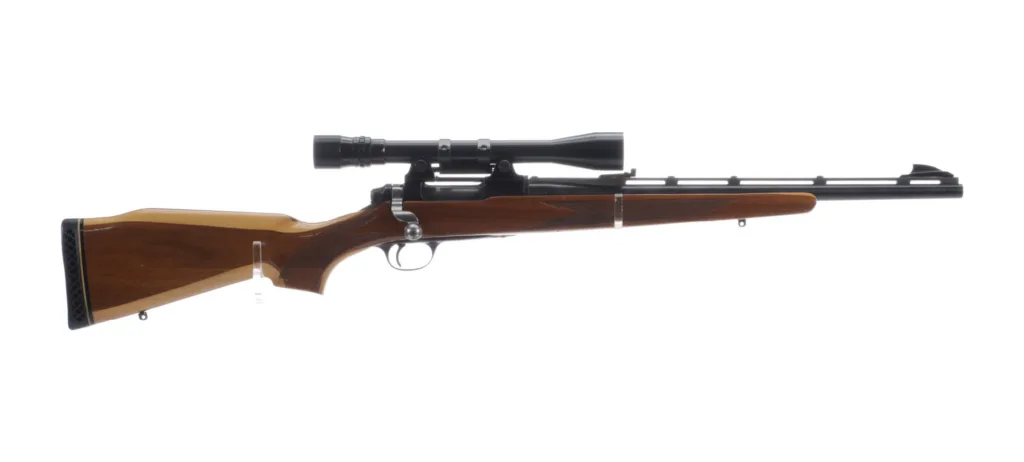
When the 600 came out in the mid-’60s, it didn’t look like any other American bolt-action. R
Some say the Model 600 and its brethren, the 600 Mangum, 660, and 600 Mohawk, were ahead of their times. Others thought the series of Remington bolt guns, which came out in the mid-1960s, were dreadful attempts at lightweight carbines that should have never existed. The truth is somewhere in the middle. With their short barrels and incredibly light 5.5-pound heft, these were extraordinarily handy rifles. But their dog-leg bolt handle was weird, and their shark fin front sight and ventilated rib (Model 600) were even weirder.
Maybe the 600’s greatest contribution to the rifle world was that it served as Jeff Cooper’s inspiration for the Scout Rifle concept. They were also the first rifles that housed the 6.5 and 350 Remington Magnum cartridges, which were the original short magnum cartridges. A forerunner to Remington’s magnificent Model Seven, these rifles are a joy to carry deep into the backcountry and many of their owners wouldn’t trade them for the world. Prices on the used market reflect the affection some have for these classics; they range from as little as $500 to 10 times that much depending on condition, chambering, and configuration.—R.M.
Winchester Model 100 and 88
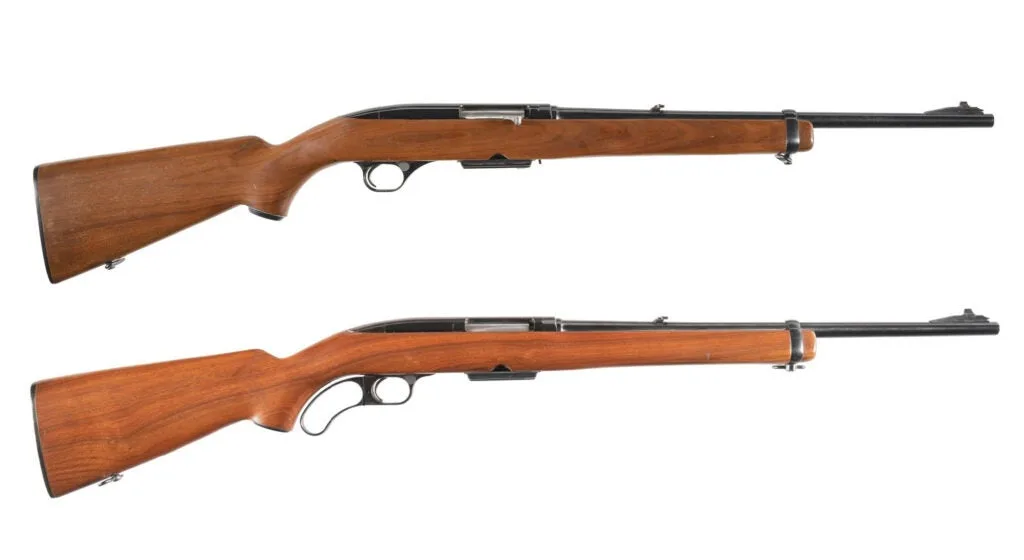
The Winchester Model 100 above and 88 below, both carbine versions. Rock Island Auction Company
I lump these two together because whenever I gush about the Model 100 and fail to mention the 88, I hear about it. So, let me say, unequivocally, that the 88 is one handsome, handy, and innovative lever gun. Winchester introduced the rifle in 1955 and called it the “bolt-action rifle with a lever,” and with its one-piece stock, 3-lug rotating bolt, detachable mag, and hammerless, solid-top, scope-ready receiver, it stood out as such. It also came chambered for the sort of modern, high-power cartridges typically offered in bolt-actions, including the .243, .284, .308, and .358 Win. Like all the rifles here, it is a classic deer rifle you don’t see often enough at camp.
But I still like the 100 better.
The Model 100 was introduced in 1960 as the 88’s autoloading twin. I own the 6 1⁄2-pound carbine version with a 19-inch barrel in .308 Win, and when it comes time for me to choose from my dozen or so deer rifles, I seem to gravitate to this one. The Model 100, like the 88, has a reputation for mediocre accuracy, but that’s not much of an issue in the big woods—besides I got lucky and got a shooter. Unlike the 88, the semi-auto 100 is fairly soft-shooting. I’ve toted mine to a bunch of deer camps and have never seen another, nor an 88, despite the fact that both have a certain following. It’s a little hard to understand, but there it is.
You can find 100s and 88s in .308, in good condition, for between $500 and $800 online. The .243 and .284 are pricier, and the carbine even more so. But there are bargains. Just keep in mind, though, that Winchester recalled the 100 in 1990, due to a potentially dangerous firing-pin malfunction. Call the company with the serial number to be sure yours has the new pin, or switch it out, which is what I did. —D.H.
Remington Model 788
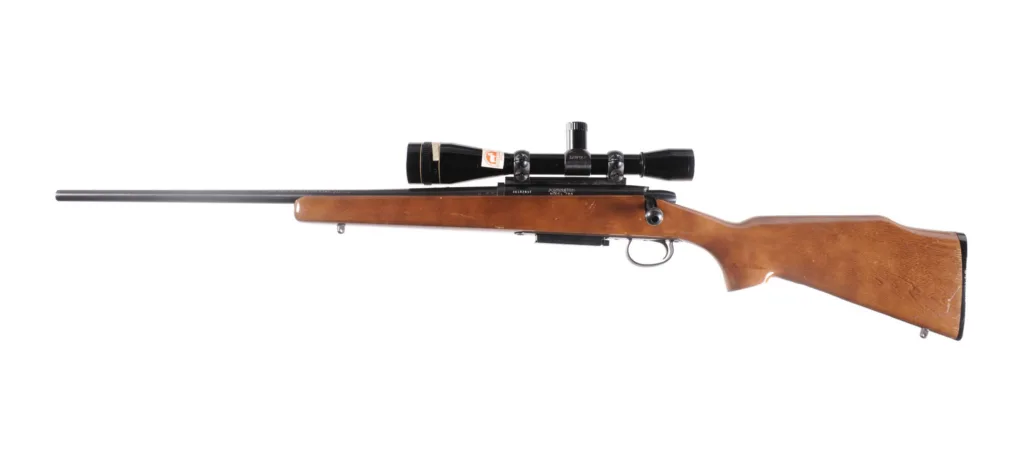
A left-handed Remington Model 788. Rock Island Auction Company
Between 1967 and 1983 there were more than a half a million Model 788s sold. The 788 was a less expensive Remington alternative to their extremely popular Model 700, but it was radically different. It had nine rear locking lugs as opposed to the 700’s front two, it had a very short 60° bolt throw, and it fed from a detachable, in-line, box magazine. The 788’s stock was plain birch wood, and the entire rifle was utilitarian in design and look. However, they had a good reputation for accuracy, were available in the most popular short-action hunting cartridges, and unexpectedly, some were even chambered for the .44 Magnum. Model 788s were available with either a rifle- or a carbine-length barrel, and a few left-handed variations were offered as well. These guns are still out there and still killing deer.
In 2006 my son used a custom 788 chambered for the .25-35 Winchester to take his first deer. It was an excellent lightweight, low-recoiling rifle for a 6-year-old boy to begin a hunting career that would eventually take him to Africa five times. In 1983, you could buy a new 788 for about $250. Today, used prices start at twice that much and can push past a grand depending on condition and chambering. —R.M.
Winchester 94 Big Bore Angle Eject
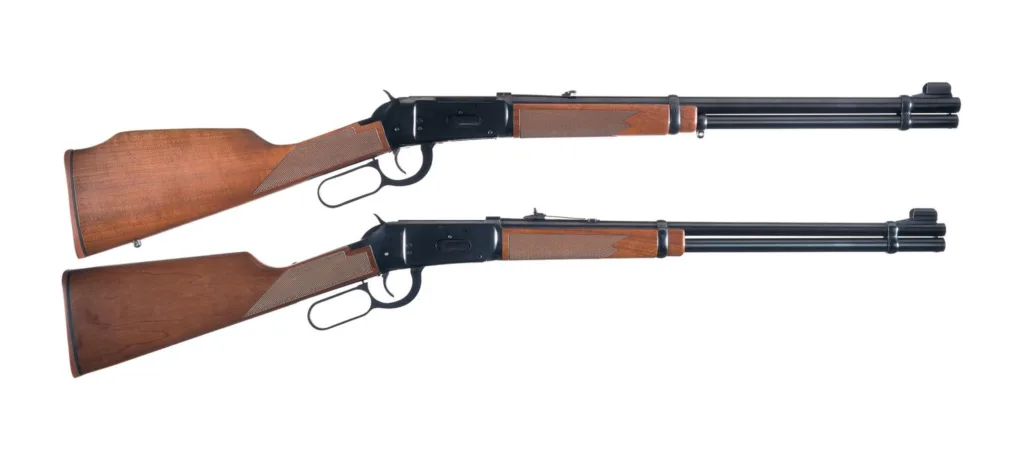
A pair of big-bore Model 94AEs, one in .356 Win, the other in .375 Win. Rock Island Auction Company
The Winchester Model 1894 might be the most iconic American-made rifle of all time. However, by the 1980s sales had started to decline, and Winchester’s attempt to remedy this was actually quite brilliant. They strengthened the receiver to handle three new higher-pressure cartridges, engineered the gun to eject fired cases at an angle, and drilled the receiver for scope mounts. This did two very important things that made the rifle better for generalized big game hunting. It allowed for the mounting of a riflescope directly above the receiver, and it permitted a rifle that had been tethered to the .30-30 for almost 90 years, to fire the new and substantially more powerful .307, .356, and .375 Winchester cartridges. Fortunately, the angle eject idea caught on, unfortunately, the three new cartridges did not.
I bought the first 94 Big Bore AE in .307 Winchester that I laid eyes on. It was a fantastic rifle, but I traded it for half interest in a coon hound. A few years ago, I picked up another, and it’s one of my favorite deer rifles. When introduced, you could snag one of these wonderous rifles for a few dollars less than $400. Today prices range between $1,000 and $2,000. —R.M.
**Read Next: The 10 Best Deer Camp Rifles
**
Husqvarna
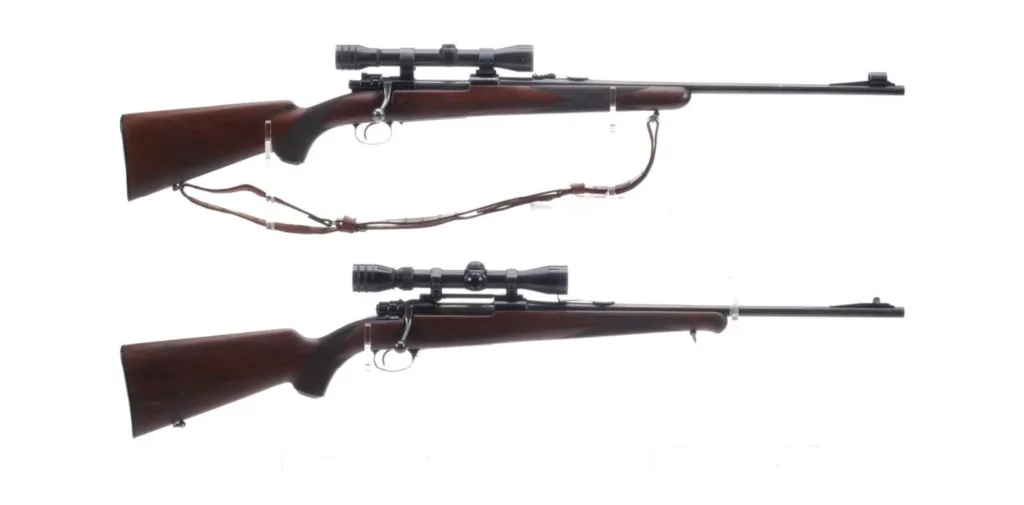
Two vintage Husqvarna bolt-action rifles built on Mauser actions. Rock Island Auction Company
Brand loyalty, like cartridge loyalty, runs deep in deer camp. But whether we’re talking about Chevy vs. Ford, DeWalt vs. Milwaukee, or Dr. Pepper vs. Mr. Pibb, it’s hard to declare a winner. When it comes to chainsaws though, the Husqvarna fanboys might have a slight edge. Unlike Stihl owners, Husqvarna owners can buy a rifle to match their saw, and that pretty much settles it in my book. In fact, gun-making was the reason Husqvarna became a company. In 1620, they started forging musket barrels for the Swedish crown. They kept making guns until 1967, and you can still find a few kicking around in hunting camps from Michigan to Jämtland.
There are a lot of different Husqvarna rifle models out there, but they have one thing in common: They’re a lot of gun for the money in the used market. You can pick up a Husqvarna rifle with a Mauser action for around $350 to $500. That’s heirloom-quality Swedish steel for about as much cash as a pair of Yeezys. Most Husqvarnas were chambered for popular European cartridges like 6.5×55 Swede and 9.3x62mm—which isn’t necessarily a bad thing. After all, who wants to get caught up in another 6.5 Creedmoor vs. .308 debate
? —M.E.

